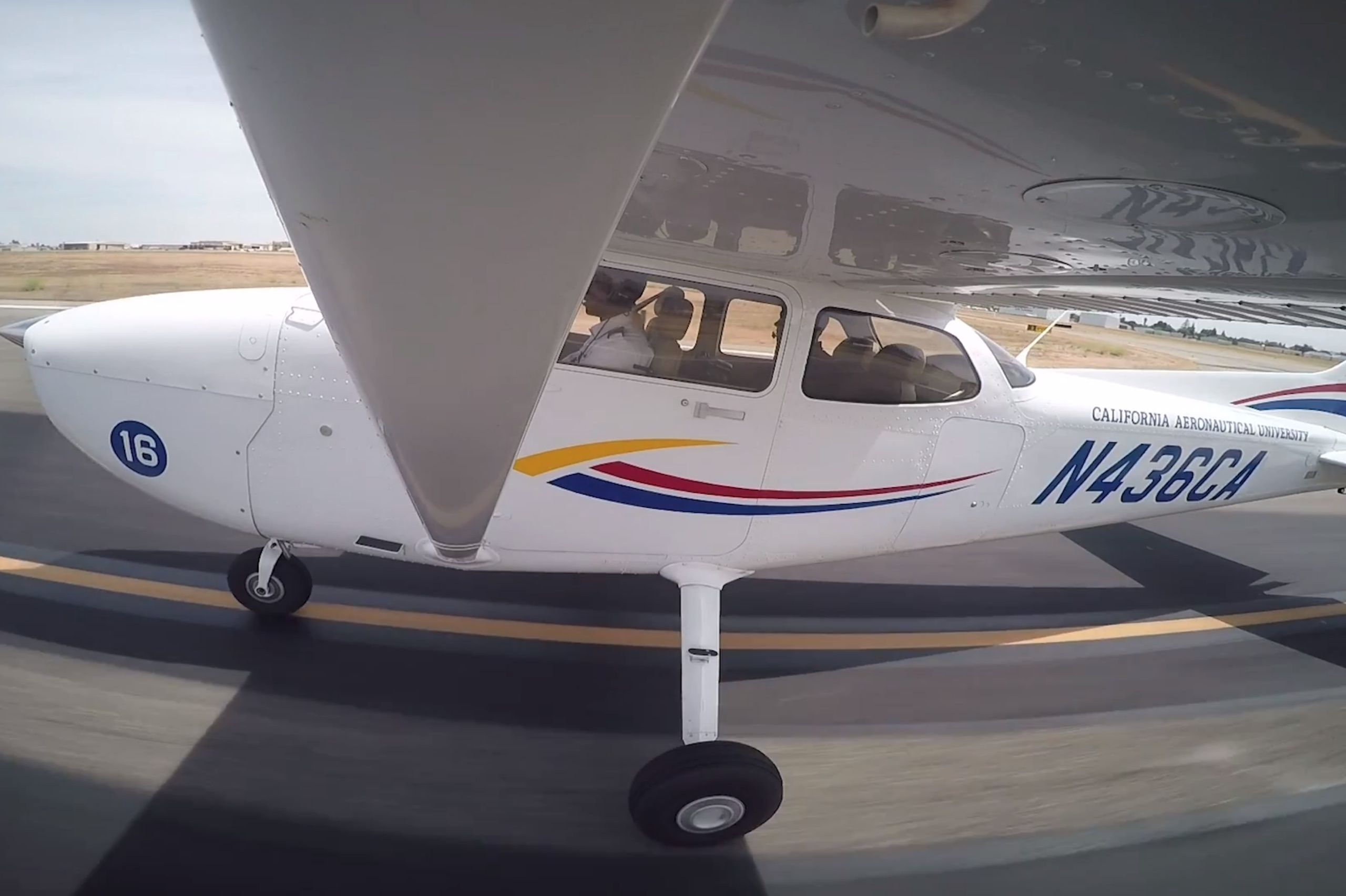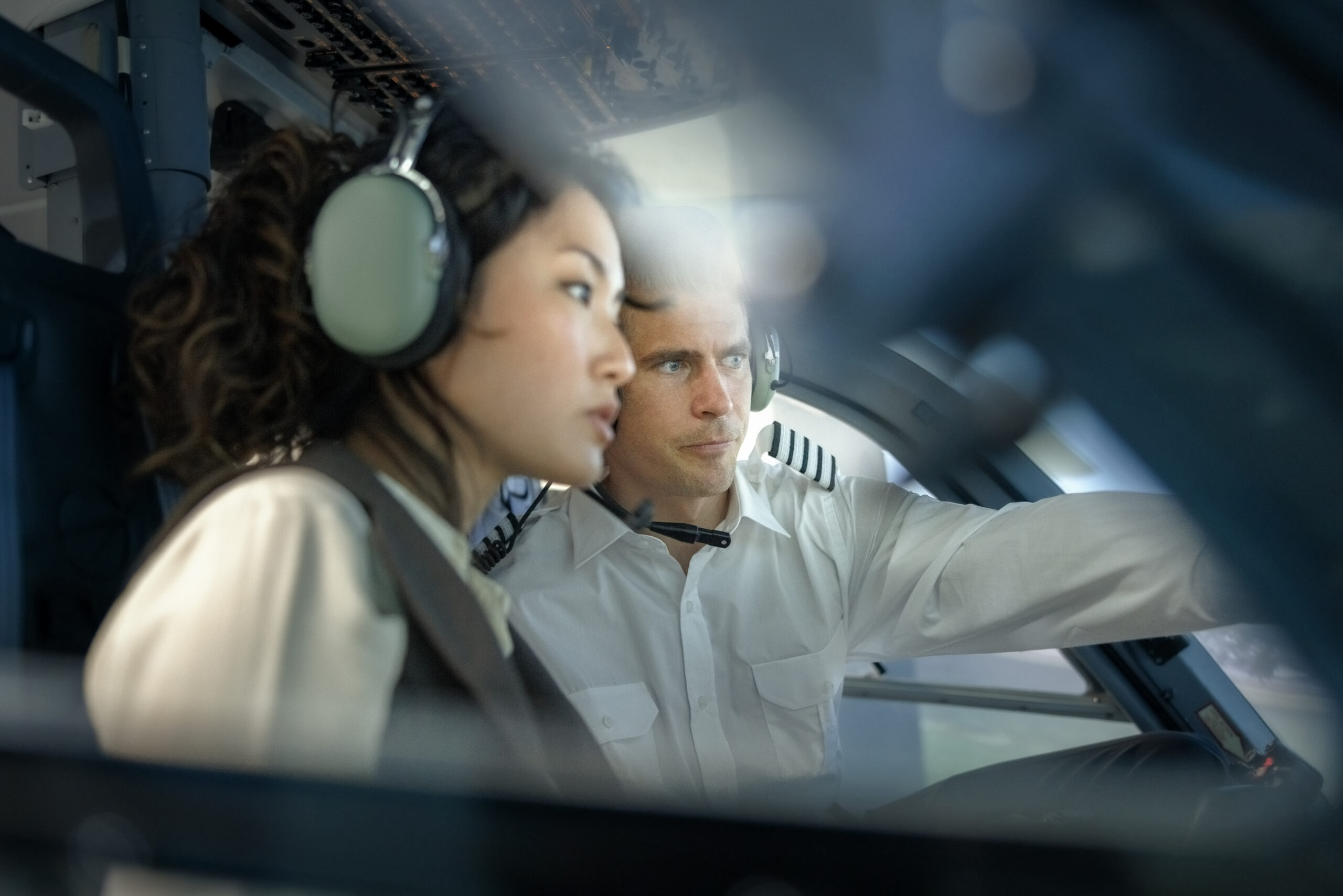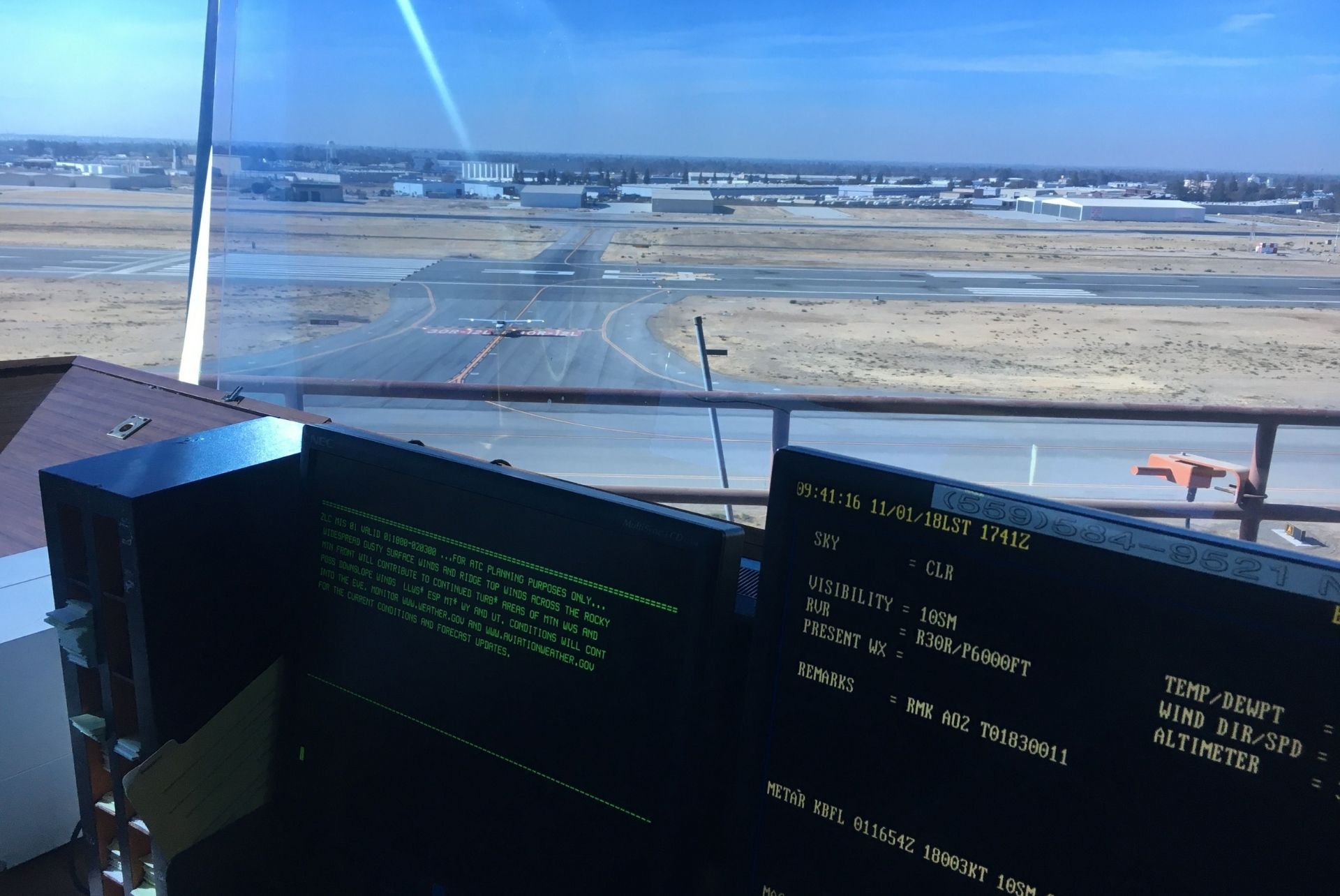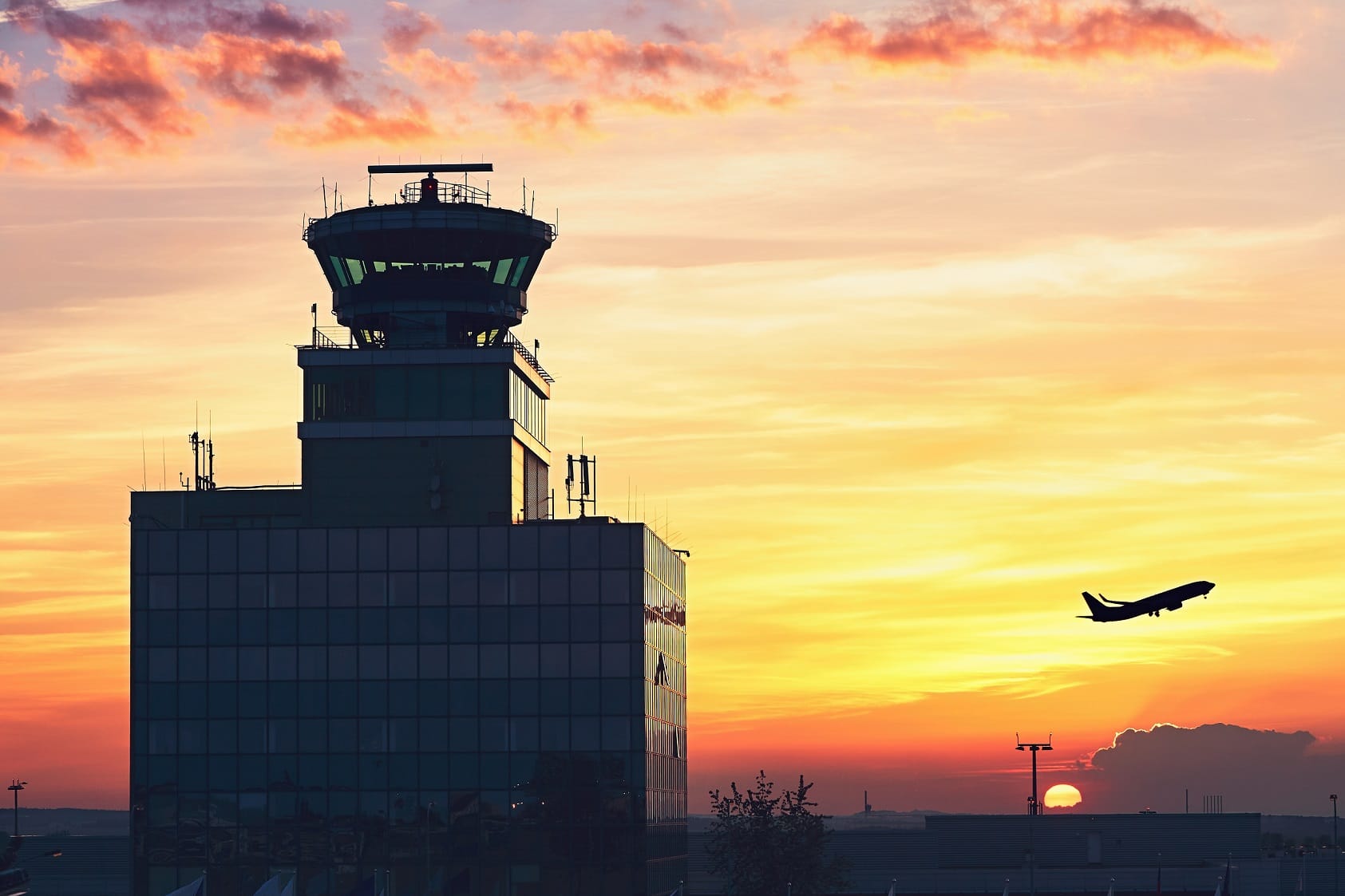Learning about and understanding traffic pattern is an important aspect of a student’s flight training; here’s what you should know.
[lwptoc numeration=”none” title=”CONTENTS:”]
The rectangle of the traffic pattern (it is inaccurate to refer to the holding pattern as “circling”) is much more than a mindless rotating around an airport or landing field. This maneuver, which is learned by each student pilot early in his or her flight training, is a vital part of maintaining a safe and organize traffic flow of takeoffs and landings. While some local procedures might be in place for pilots to allow for rules about noise abatement and specific terrain, the patterns for aircraft traffic is usually standardized. Usually, the airfield traffic pattern is followed while the pilots can see the runway or airfield. In Great Britain and Commonwealth nations, the traffic pattern is referred to as “the circuit.”
Usually, the pattern of traffic turns to the left and is conducted at one thousand feet above ground level (AGL.) However, due to specific terrain such as mesas or large buildings, the altitude might change, or rotate to the right. Airports with air traffic control guidance might have an altitude other than 1000 feet AGL.
Knowing the traffic pattern, as well as how to correct for local adjustments to it, helps all of the pilots using it remain safe and organized, even if the airport is not outfitted with an air traffic control tower, or the tower is not staffed. Maneuvering in this three-dimensional space is crucial in becoming a contributing member of the aviation community.
Wind and Traffic Pattern
An airfield traffic pattern helps to “direct traffic” over an airfield. Pilots assume that other pilots have knowledge of it and are following its maneuvers. That is why student pilots are typically taught this information early in their training.
Whenever possible, aircraft take off and land facing the wind. Doing so lowers the speed of the airplane over the ground. When the wind is taken into consideration, pilots do not need as much of the runway to land or take off. This is particularly important with large aircraft, particularly short runways, low power airplanes, or airports situated at high altitudes, where take offs and landings can require more power, particularly in warmer weather.
At most airports with multiple runways, runway orientation can change based on the direction of the wind. Pilots must pay careful attention and take into consideration all communications from air traffic controllers (ATC) to know which runway is most suitable. This then decides the flow of the traffic pattern.
Departure, Crosswind, and Downwind Legs
There are six parts to a traffic pattern. Pilots must thoroughly understand these in order to conduct them safely.
1. Departure
The departure leg takes place right after takeoff. The airplane is continuing down the runway heading and beginning its climb to a higher altitude. If you are a passenger on a commercial airliner, this is the part at which you and the flight attendants are strapped in and you are not permitted to use electronic devices.
The flight crew (pilot and first officer) are maintaining a sterile cockpit and avoiding unnecessary chatter, so that they can concentrate on this important phase of flight. For airplanes which are light, the departure leg passes quickly. This part of the traffic pattern can pass as quickly as within three hundred feet of the altitude of the pattern. The pilot in command (PIC) continues climbing as he or she enters the next leg.
2. Crosswind
After completing the departure leg, the crew makes a right angle (90 degree) turn to what is known as the crosswind leg. This part of the traffic pattern is performed while the airplane is climbing, on its way its desired altitude. It takes place perpendicular to the end of the runway from which the pilot performed the takeoff.
3. Downwind
Soon after the crosswind leg is completed, the downwind leg begins. It is also a 90 degree turn and happens quite rapidly after the crosswind leg. This is the leg on which pilots begin to prepare for landing. The descent of the aircraft starts. It is typically longer than the other legs.
Base, Final Approach, and Upwind Legs
4. Base
The base leg is short, but critical. It is perpendicular to the approach side of the runway on which the pilot is going to land.
5. Final approach
On a commercial airline flight, the crew in the cockpit will typically alert the flight attendants and passengers to that the aircraft has begun this portion of the landing procedure. The aircraft is decreasing in altitude in a controlled manner. Flight is taking place along the center line of the runway, in the direction of the landing. Sometimes, this section of the landing procedure is called “short final.”
6. Upwind
This portion of the traffic pattern is used by pilots who are either exiting or entering the pattern. It takes place parallel to the runway, but a few degrees offset from the departure leg so as to avoid running into the aircraft on that phase of the circuit. Pilots also default to this part of the pattern when they are in a “go around,” or a wave-off.
The Layout of Traffic Patterns
Student pilots are taught to enter the traffic pattern at the altitude of the pattern. It is best to do so on the downwind leg at a forty-five degree angle. Entering here helps all of the pilots to see one another.
Pilots enter the pattern by using the airplane’s magnetic compass and ensuring that its alignment matches the heading indicator. Using this technique while watching for other aircraft, coordinating the flight surfaces of the aircraft, and paying attention to other aircraft as well as commands from the air traffic controller requires a great deal of attention and practice.
Student pilots are wise to remain patient and dedicate some time to practicing traffic layouts. It can be useful to visualize the steps of working through the pattern, as well as talking through the procedure with a certified flight instructor (CFI) or experienced pilots.
Ready to soar in your aviation career?
Mr. Matthew A. Johnston has over 23 years of experience serving various roles in education and is currently serving as the President of California Aeronautical University. He maintains memberships and is a supporting participant with several aviation promoting and advocacy associations including University Aviation Association (UAA), Regional Airline Association (RAA), AOPA, NBAA, and EAA with the Young Eagles program. He is proud of his collaboration with airlines, aviation businesses and individual aviation professionals who are working with him to develop California Aeronautical University as a leader in educating aviation professionals.



